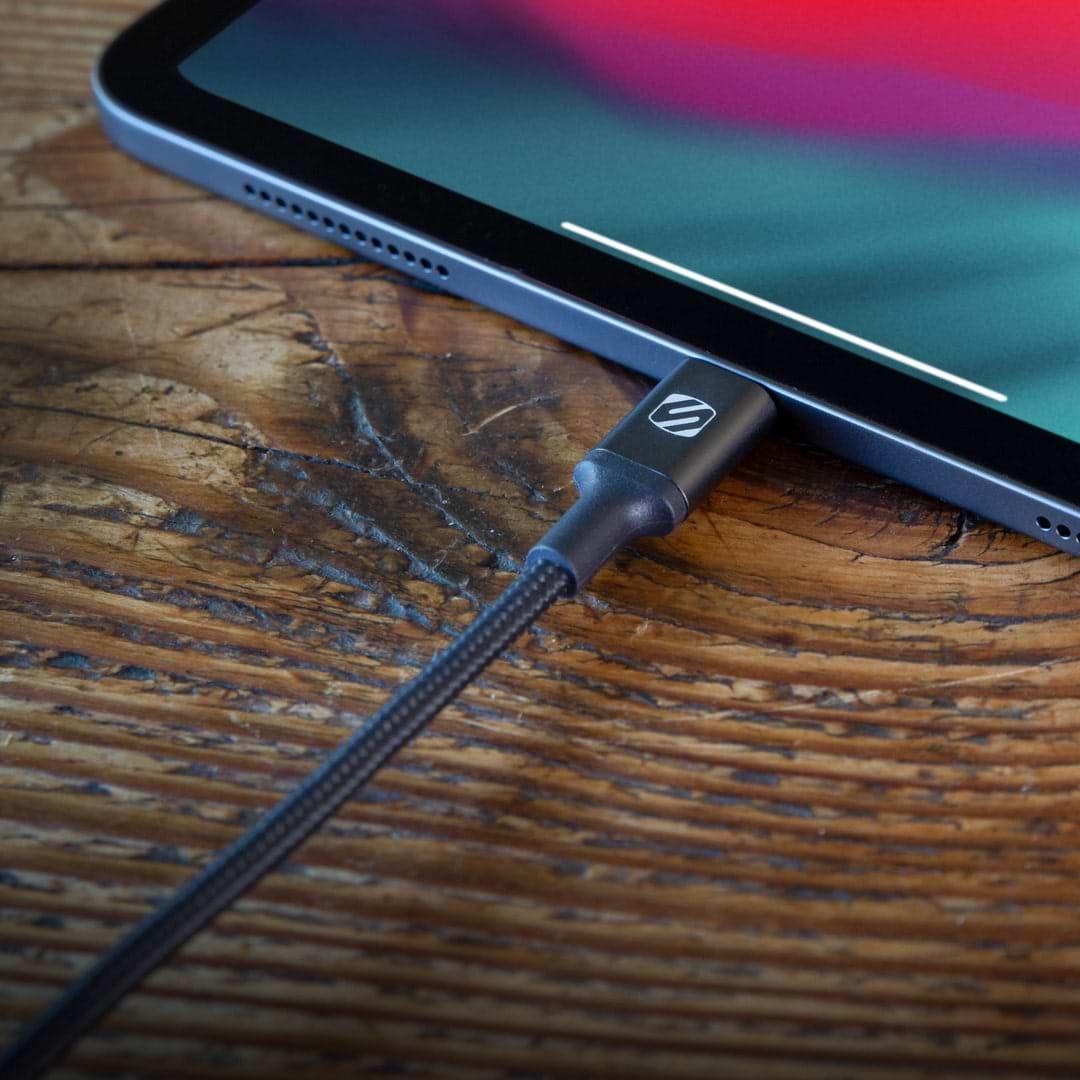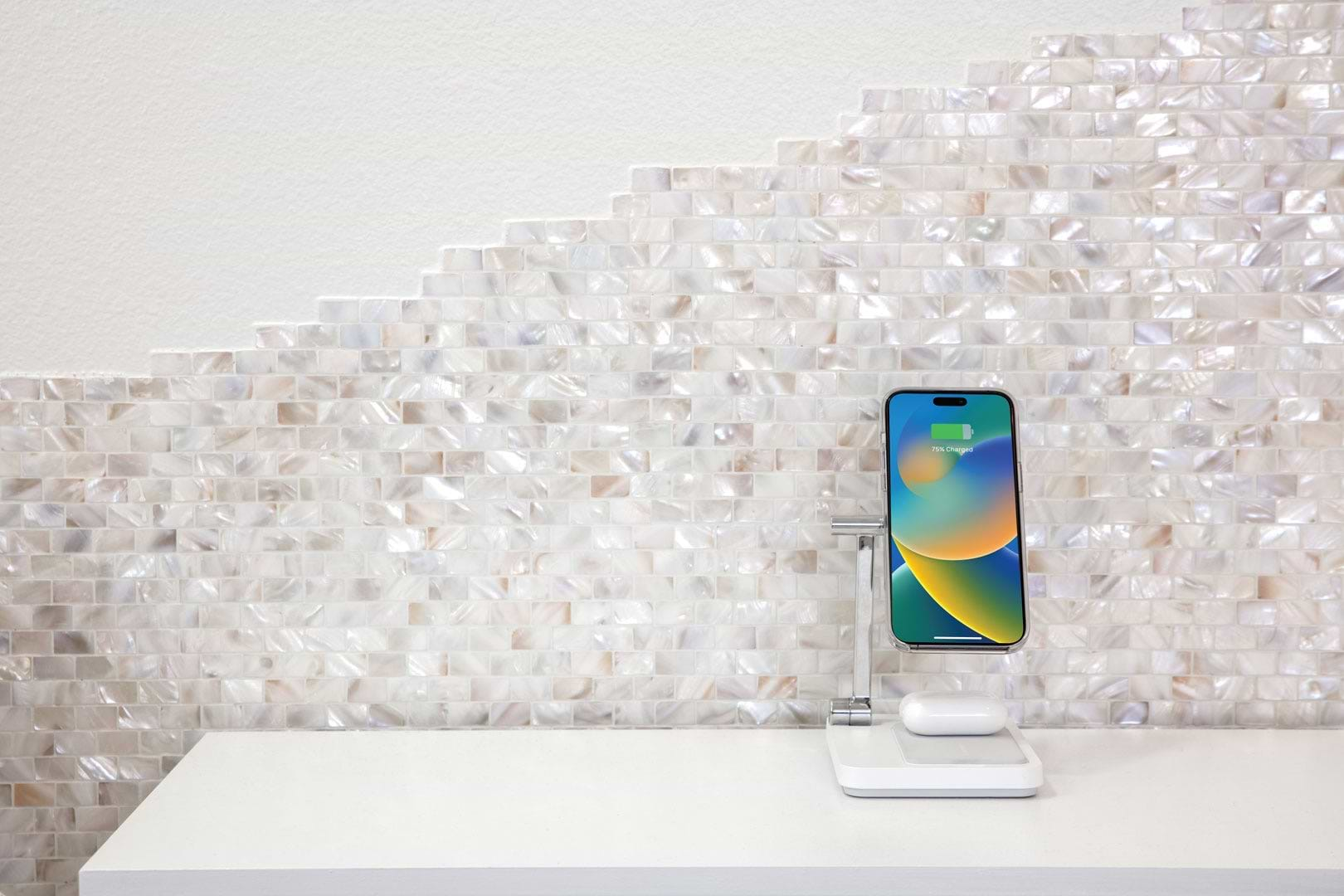Exploring iPad Wireless Charging Possibilities

Technology is constantly evolving, and one area that has seen significant advancements in recent years is wireless charging. With the ever-growing popularity of iPads, it is only natural to wonder about the potential for wireless charging in these devices. In this article, we will get into the possibilities and explore the current state of iPad charging, as well as its future prospects.
Understanding Wireless Charging Technology
Before diving into the specifics of iPad wireless charging, it's important to grasp the fundamentals of this technology. Wireless charging, also known as inductive charging, is a method of charging devices without the need for physical cables or connectors. Instead, it relies on electromagnetic fields to transfer energy between a charging pad or dock and the device itself.
Wireless charging technology has revolutionized the way we power our devices. Gone are the days of fumbling with tangled cables and searching for available power outlets. With wireless charging, all you need to do is place your device on a charging pad and watch as it magically powers up.
The Science Behind Wireless Charging
At the heart of wireless charging lies electromagnetic induction. This phenomenon involves the transfer of energy between two objects through a magnetic field. In the case of wireless charging, alternating current (AC) passes through a charging pad or docking station, generating a magnetic field. This field induces a current in the receiving device, which then converts it into direct current (DC) to charge the battery.
Imagine a world where you never have to worry about running out of battery power again. With wireless charging, this dream is becoming a reality. Whether you're at home, in the office, or on the go, you can easily keep your devices charged and ready for action.
Evolution of Wireless Charging
Wireless charging technology has come a long way since its inception. Initially limited to small devices like smartphones, it has now expanded to include a variety of devices, ranging from wearables to electric vehicles. This progress has been made possible by advancements in efficiency, standardization, and increased integration of wireless charging capabilities into various products.
Imagine a world where you can charge your phone, smartwatch, and even your electric car all wirelessly. This future is not too far away. As technology continues to evolve, we can expect to see even more devices adopting wireless charging capabilities.
Wireless charging is not only convenient, but it also has the potential to reduce electronic waste. With fewer cables and connectors needed, there is less material that needs to be manufactured and disposed of. This is a step towards a more sustainable future.
The Current State of iPad Charging
As it stands, charging iPads typically involves connecting a Lightning cable to the device, which is then plugged into a power source. While this method has served iPad users well over the years, wireless charging presents an enticing alternative that could revolutionize the way we power these devices.
The Traditional iPad Charging Method
The traditional method of charging iPads has proven to be reliable and effective. However, it does come with its limitations. Cables can be cumbersome to carry and easily damaged or lost. Additionally, the constant plugging and unplugging of cables may cause wear and tear on the device's charging port.
Despite these limitations, the traditional charging method has been the go-to option for iPad users. The Lightning cable, with its compact design and compatibility with various power sources, has made it convenient to charge iPads at home, in the office, or on the go. The reliability of this method has made it a trusted choice for users worldwide.
Limitations of Current Charging Techniques
Aside from the practical inconveniences associated with traditional charging, current techniques also have their drawbacks. For example, if the charging port becomes damaged or faulty, it can render the device unusable until repaired. This can be frustrating for users who rely heavily on their iPads for work, entertainment, or communication.
Furthermore, the limited length of charging cables can pose a challenge when using the iPad while it is plugged in. Whether you're trying to watch a movie, read an e-book, or browse the web, the short reach of the cable can restrict your movement and make it less comfortable to use the device.
Another limitation of the current charging techniques is the dependency on a power source. While it is convenient to have access to power outlets in most indoor settings, it can be a challenge to charge the iPad when you're on the move or in outdoor environments. This limitation restricts the portability and flexibility of the device, hindering its usability in certain situations.
Despite these limitations, the iPad has remained a popular choice among consumers due to its versatility, performance, and extensive app ecosystem. However, as technology continues to evolve, so does the demand for more convenient and efficient charging methods.
Wireless charging has emerged as a potential solution to address the limitations of traditional charging techniques. This technology allows users to charge their iPads without the need for cables or physical connections. Instead, the device is placed on a charging pad or dock, and power is transferred wirelessly through electromagnetic fields.
While wireless charging is not a new concept, it has gained significant traction in recent years with the introduction of Qi wireless charging standards. This standardization has led to the widespread adoption of wireless charging in various devices, including smartphones, smartwatches, and even some laptops.
With the growing popularity of wireless charging, it is only a matter of time before this technology becomes more prevalent in the iPad ecosystem. Imagine being able to charge your iPad simply by placing it on a charging pad, eliminating the need for cables and reducing wear and tear on the charging port.
Moreover, wireless charging could enhance the user experience by allowing users to use their iPads more freely while they are being charged. Whether you're watching a movie in bed, working at a coffee shop, or attending a meeting, the freedom to use your iPad without being tethered to a charging cable would undoubtedly be a game-changer.
As the demand for wireless charging grows, we can expect to see advancements in this technology, such as faster charging speeds, longer-range charging capabilities, and integration with other devices and accessories. These developments will further enhance the convenience and usability of iPads, making them even more indispensable in our daily lives.
The Potential for Wireless Charging in iPads
Wireless charging could address many of the limitations inherent in current iPad charging methods. By eliminating the need for cables and connectors, it provides a more convenient and user-friendly experience for iPad owners.
Imagine a world where you no longer have to fumble with tangled charging cables or search for available power outlets. With wireless charging, this dream could become a reality for iPad users.
Benefits of Wireless Charging for iPad Users
One of the key advantages of wireless charging is the freedom it offers. Users would no longer need to worry about carrying around charging cables or finding available power outlets. Instead, they could simply place their iPads on a charging pad or dock, allowing for hassle-free charging.
Picture this: you're sitting at your favorite coffee shop, engrossed in your work on your iPad.
Suddenly, you notice that your battery is running low. With wireless charging, you could simply place your iPad on the specially designed charging pad embedded in the table, and continue working without skipping a beat.
Furthermore, wireless charging pads or docks could potentially be integrated into various surfaces, such as desks or countertops, making charging even more seamless and integrated into daily routines. Imagine having a wireless charging pad built into your kitchen countertop, allowing you to charge your iPad while preparing a meal or following a recipe.
Technical Challenges in Implementing Wireless Charging
While the benefits of wireless charging are undoubtedly enticing, there are several technical challenges that need to be overcome for its successful implementation in iPads. These challenges include optimizing power transfer efficiency, ensuring compatibility with existing charging standards, and addressing potential electromagnetic interference.
Efficiency is a key concern when it comes to wireless charging. It is important to develop technologies that can transfer power wirelessly without significant energy loss. Researchers are working tirelessly to improve the efficiency of wireless charging systems, ensuring that iPad users can enjoy fast and reliable charging without compromising on energy consumption.
Compatibility is another challenge that needs to be addressed. The wireless charging technology implemented in iPads should be compatible with existing charging standards, allowing users to charge their devices using a variety of wireless charging pads or docks available in the market. This would ensure that iPad users have a wide range of options when it comes to wireless charging.
Lastly, electromagnetic interference is a potential issue that needs to be tackled. Wireless charging systems operate using electromagnetic fields, and it is crucial to ensure that these fields do not interfere with other electronic devices or cause any harm to users. Extensive testing and safety measures are being implemented to address this concern and ensure the overall safety and reliability of wireless charging for iPads.
However, with ongoing research and development, it is likely that these challenges will be overcome, leading to a future where wireless charging is a viable option for iPad users. The potential for wireless charging in iPads is immense, and it holds the promise of revolutionizing the way we charge and use our devices.
Comparing Wireless Charging with Other Devices
Wireless charging is not a new concept and has already been adopted in other devices.
Wireless Charging in Smartphones
Smartphones have been at the forefront of wireless charging adoption. Many flagship smartphones now offer wireless charging capabilities, allowing users to simply place their devices on charging pads to replenish their battery life. This convenience has made wireless charging a desirable feature for smartphone users.


Wireless Charging in Laptops
While wireless charging in laptops is still in its early stages, it holds great promise. As laptops continue to become thinner and more lightweight, the need for a single-cable charging solution becomes increasingly apparent. Wireless charging could eliminate the need for bulky charging adapters and streamline the charging process for laptop users.
Future Prospects of Wireless Charging in iPads
As wireless charging gains momentum and becomes more commonplace, it is natural to wonder about Apple's stance on this technology and the future of charging iPads.
Apple's Stance on Wireless Charging
Apple has already embraced wireless charging with its latest iPhone models, indicating a willingness to adopt this technology. Given the popularity of iPads and Apple's commitment to innovation, it is not far-fetched to imagine a future where wireless charging becomes a standard feature in iPads.
Predictions for the Future of iPad Charging
Looking ahead, it is likely that wireless charging will become a more prevalent option for powering iPads. As technology continues to advance, we can expect improvements in efficiency, increased compatibility, and enhanced integration of wireless charging capabilities into the iPad ecosystem.
Conclusion
In conclusion, the possibilities for wireless charging in iPads are exciting. As the technology continues to evolve and overcome technical challenges, we can anticipate a future where wireless charging becomes a standard and convenient method for powering these popular devices. With the benefits it offers and the potential it holds, wireless charging has the potential to revolutionize the way we charge and use our iPads.